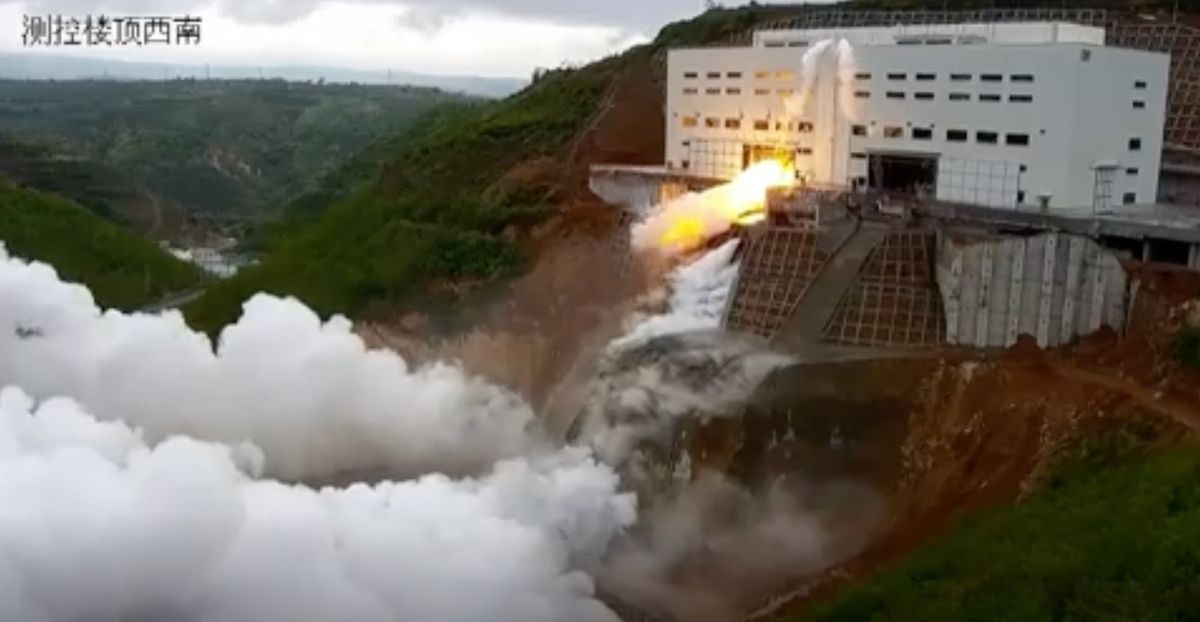- Joined
- 21 April 2009
- Messages
- 13,148
- Reaction score
- 5,988
Massive rocket base to be built
The world's largest design, production and testing base for rockets is being built in Tianjin, Liang Xiaohong, deputy head of the China Academy of Launch Vehicle Technology, said Thursday. The first phase of the rocket industrial base in Tianjin's Binhai New Area will be completed within the year. Rocket parts will be designed, manufactured, assembled and tested at the base, Liang told the Xinhua News Agency. Twenty of the 22 plants have been completed, and some of them are ready for operation. The base is designed to meet China's growing demand in space technology research and development for the next 30 to 50 years, he added. By integrating the industrial chain, the base will be able to produce a whole spectrum of rockets of different sizes and types for China's lunar probe project, space station and other projects, he said. China's new rockets, including Long March IV, will be designed and manufactured in the 200-hectare base, he said. Liang also said the research and development of China's new generation of carrier rockets, Long March V, were going according to plan, and expected to catch up with the US Delta-4H rockets in payload capacity. With a maximum low Earth-orbit payload capacity of 25 tons and high Earth-orbit payload capacity of 14 tons, Long March V rockets would reach the world top level in payload capacity, said Liang. Long March V rockets are designed for missions following the country's manned space program and lunar exploration program, said Liang, also a member of the National Committee of the Chinese People's Political Consultative Conference (CPPCC).
Meanwhile, the unmanned space module Tiangong-1 that China plans to launch this year will be sent into space by a modified Long March II-F carrier rocket, Liang said. The 8.5-ton Tiangong-1 is expected to be launched in the second half of this year to perform the nation's first space docking. It will dock with the unmanned Shenzhou-8 spacecraft, which will be launched two months after Tiangong-1. "Both Tiangong-1 and Shenzhou-8 will be launched by a Long March II-F carrier rocket," said Liang. Researchers have made nearly 170 technological modifications to the original Long March II-F model, Liang said. The Long-March II-F rocket has successfully sent seven spaceships into space.
------------------------------------------------------------------------------------------
The US has cut NASA's budget and the next moon mission projects but wants to pump $65 billion into high speed rail. WHAT???????? How about pump that money into NASA and other "future" 21st century technologies not a "faster" 19th century technology.
The world's largest design, production and testing base for rockets is being built in Tianjin, Liang Xiaohong, deputy head of the China Academy of Launch Vehicle Technology, said Thursday. The first phase of the rocket industrial base in Tianjin's Binhai New Area will be completed within the year. Rocket parts will be designed, manufactured, assembled and tested at the base, Liang told the Xinhua News Agency. Twenty of the 22 plants have been completed, and some of them are ready for operation. The base is designed to meet China's growing demand in space technology research and development for the next 30 to 50 years, he added. By integrating the industrial chain, the base will be able to produce a whole spectrum of rockets of different sizes and types for China's lunar probe project, space station and other projects, he said. China's new rockets, including Long March IV, will be designed and manufactured in the 200-hectare base, he said. Liang also said the research and development of China's new generation of carrier rockets, Long March V, were going according to plan, and expected to catch up with the US Delta-4H rockets in payload capacity. With a maximum low Earth-orbit payload capacity of 25 tons and high Earth-orbit payload capacity of 14 tons, Long March V rockets would reach the world top level in payload capacity, said Liang. Long March V rockets are designed for missions following the country's manned space program and lunar exploration program, said Liang, also a member of the National Committee of the Chinese People's Political Consultative Conference (CPPCC).
Meanwhile, the unmanned space module Tiangong-1 that China plans to launch this year will be sent into space by a modified Long March II-F carrier rocket, Liang said. The 8.5-ton Tiangong-1 is expected to be launched in the second half of this year to perform the nation's first space docking. It will dock with the unmanned Shenzhou-8 spacecraft, which will be launched two months after Tiangong-1. "Both Tiangong-1 and Shenzhou-8 will be launched by a Long March II-F carrier rocket," said Liang. Researchers have made nearly 170 technological modifications to the original Long March II-F model, Liang said. The Long-March II-F rocket has successfully sent seven spaceships into space.
------------------------------------------------------------------------------------------
The US has cut NASA's budget and the next moon mission projects but wants to pump $65 billion into high speed rail. WHAT???????? How about pump that money into NASA and other "future" 21st century technologies not a "faster" 19th century technology.

